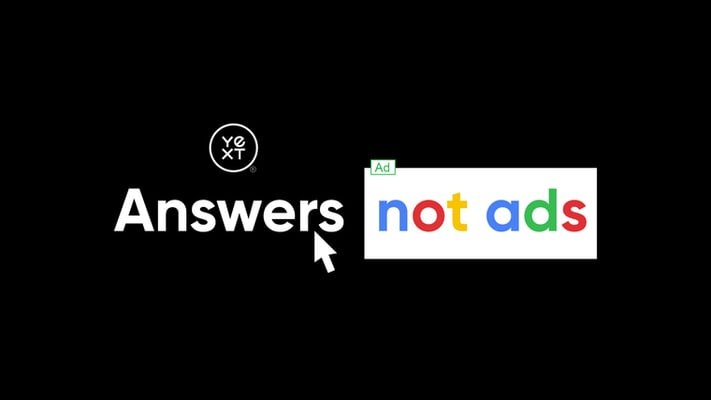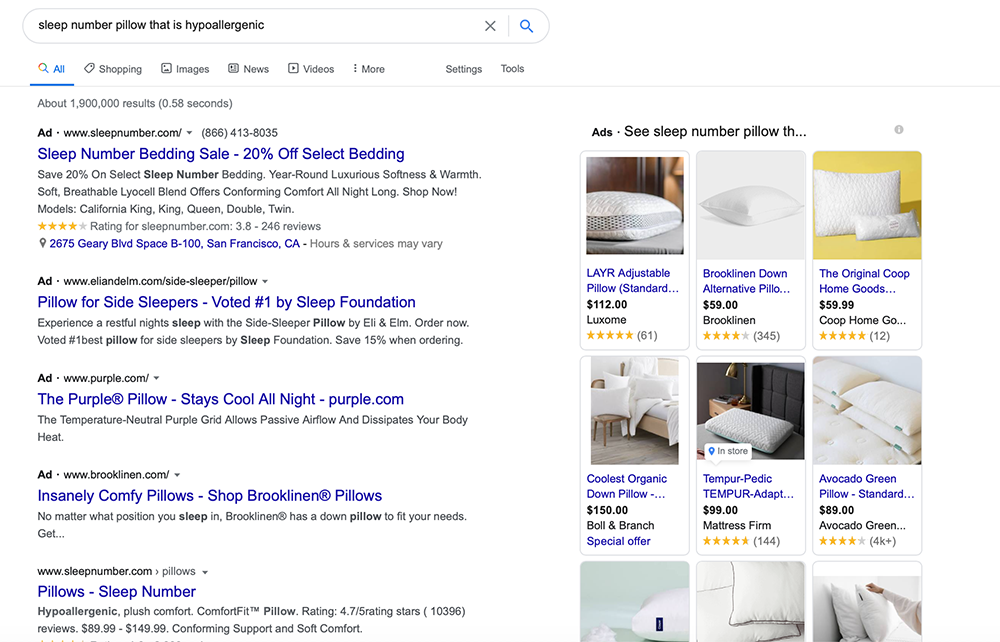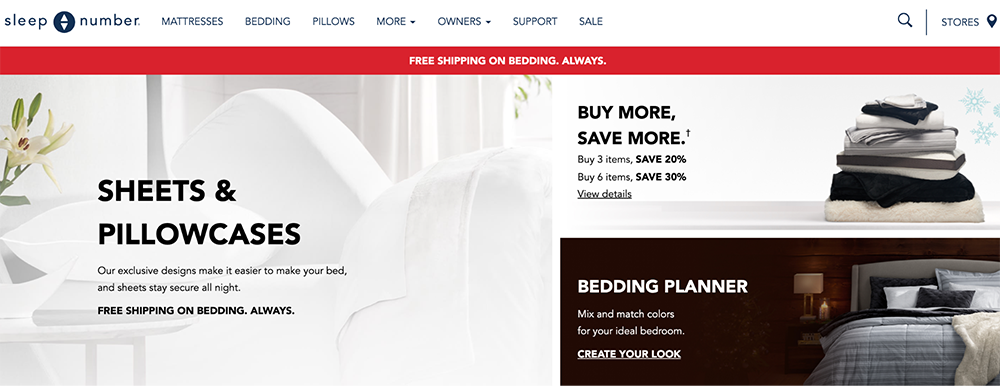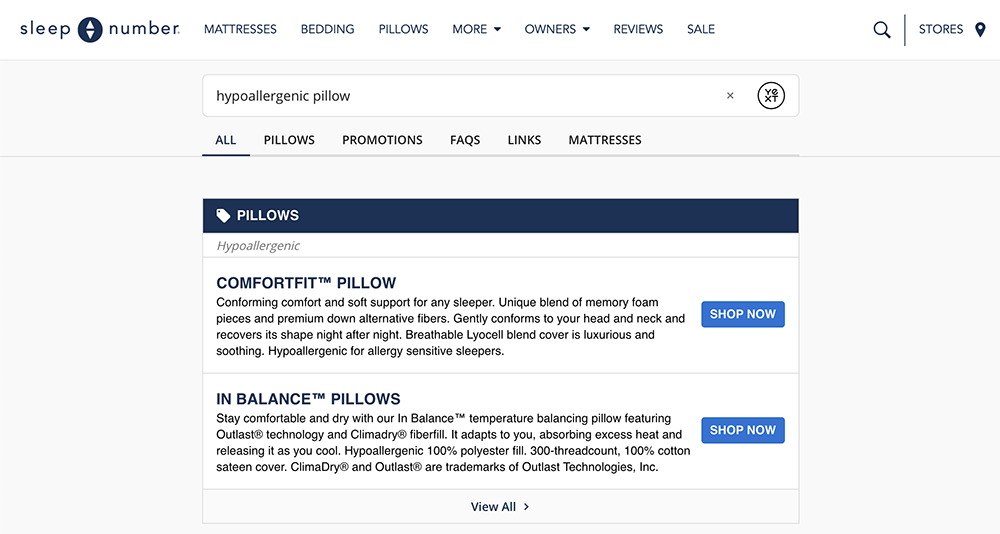
It happens billions of times a day.
Consumers bounce off brand websites to Google because of a really bad site search experience. Yet it goes from bad to worse: The customer types the same query into Google and gets bombarded with ads — not the answer they were looking for.
Search engines like Google have been executing a hostile takeover of the customer journey for the last 20 years. But what’s crazy is that brands have let it happen. So the question is: Why do brands keep perpetuating a system that works against them — and their customers?
The Ads Engine.
Google prides itself on organizing the world’s information and making it universally accessible. With over 5 billion searches a day, they are succeeding in their mission — for most searches.
But for objective, fact-based branded searches — where a consumer is seeking official answers from the brand itself — Google transforms from a search engine into an ads engine. And that’s not a bug, that’s a feature — a multi-billion dollar feature. (In fact, last year a staggering 83% of Google’s $162 billion in revenue came from paid search.)
Typically one of the many ads the customer sees is on Google from the brand they are searching for — and whose website they likely just bounced off of. Think about how out of whack this is: the brand couldn’t answer a question on their own website — for free — and now they have to pay to win that customer back on Google. And with a bunch of their competitors on the page right there with them and their organic result below the fold, it’s a crap shoot.
Here’s an example:
Sleep Number, a popular U.S. based mattress and bedding accessories manufacturer, differentiates itself by offering custom sleep solutions tailored to individual needs.
Now, imagine I have a specific product question, like wanting to know which Sleep Number pillows are hypoallergenic. I type it into Google, but I don’t even have to finish the question — it knows what I am looking for:

While impressive, it doesn’t matter because the results don’t match my needs. The next screen I get is cluttered with ads — twelve, to be exact. It’s literally all I can see:

Remember when the ads were on the side, present but innocuous? Well times have changed, and my simple question has ignited an all-out ads assault — including an ad from Sleep Number, the brand I am inquiring about.
The ad wouldn’t be so bad if it actually answered my question. But if you look at the copy it’s about a bedding sale. If I click the blue link it takes me to the Sleep Number website, where I have to start my search all over again. Lots of effort, and still no answer — and it cost Sleep Number in the process. Consumer 0, Brand 0.

The organic side of the Google house isn’t so great either. The first non-paid result is from Sleep Number (albeit barely above the fold) but it’s still not a direct answer to my question. The reality is Google hasn’t lived up to its promise and made the information about my branded search query readily accessible. But ads? I’m practically drowning in them.
A Better Way
The best (and frankly, only) way for brands to fix a flawed system is to actually compete with Google. That might sound impossible, maybe even ridiculous. But it’s actually quite doable.
If brands invested in a modern, sophisticated search experience on their own websites they could stop sending their customers away to Google — and also stop shelling out big bucks to then try to win them back.
So what does it take to create a modern search experience?
First, a brand’s website should have universal search, meaning you can search for anything from one search box. What do you see when you go to Google? A single search bar where every search begins. If brands have multiple places to search, they have failed.
Next, the search needs to understand natural language. Think about the last time you typed a query into Google. It completed your thought as if it knew exactly what you were going to ask. And because of advances in AI, people no longer type random keywords into a search box; they use multiple words and pose queries the way they might when talking to another human. (And if you have a voice-enabled assistant at home like Alexa you’re definitely asking questions in a more natural, conversational way.)
Finally, the search result needs to be a complete answer, not just a list of blue links to other pages. Things like featured snippets, clear CTAs, and local packs are critical to providing the richest answer possible. The UI should also be dynamic so that the answers are accurate and up-to-date — you don’t want to deliver old or out-dated answers, otherwise you’ll be pegged unreliable and you’ll feed the Google machine once again.
Let’s go back to the Sleep Number example, except we’ll run the query on their own website enhanced with modern site search:

The difference is night and day. This time I get a clear, official answer. No middle man aggregator that makes me work harder to find that information. And no ads to distract me. Consumer 1, Brand 1 — a win-win.
Answers, not ads
With 92% market share, Google is the definition of search. But as much as we rely on Google (and its few competitors), trust in search engines isn’t all that strong. In fact, in the most recent Edelman Trust Survey only 62% of people worldwide trust search engines for news and information — down 4 points from 2019.
What that means is that people want a change.
Duck Duck Go is quietly helping break the consumer search paradigm. Their solution is an alternative to Google with a simple promise: they won’t track you online when you search. More specifically, they believe search results should be based on the keyword and not the intimate details of the person behind the query. And while their recent record of almost 73 million daily searches is just a fraction of Google’s, it’s a big deal that they’ve managed to disrupt the norm and shave off 1% of consumer search.
But there’s more in the world of search that is ripe for disruption. Customers are frustrated. Marketers are frustrated. So it’s time to decentralize branded search from one player and build a better system so that searches about brands start — and end — with an official answer on their own domain.
In other words, it’s time to take the b.s. out of branded search.
The original version of this page was published at: https://www.yext.com/blog/2020/10/time-to-take-bs-out-of-branded-search/
Yext (NYSE: YEXT) helps organizations answer every question about their business. Yext's Answers Platform collects and organizes content into a Knowledge Graph, then leverages a complementary set o... Read more
OhioHealth Perfects Practitioner Listings and Manages Events with YextOhioHealth is a healthcare system spanning the majority of the state. Its network consists of 29,000 associates, ...read more
Quick: what’s changed in technology in the last twenty-five years?The (obvious) answer is: pretty much everything. From cell phones, to email, to that ear-splitting dial-up internet ...read more
It doesn’t take a surfeit of smarts to recognize that most consumers will think twice before splurging on a designer handbag or OLED-display TV during a recession. The challenge ...read more
Public concern about the COVID-19 coronavirus is at an all-time high. People are trying to understand the facts and educate themselves on how to stay healthy in real-time. Like you, ...read more